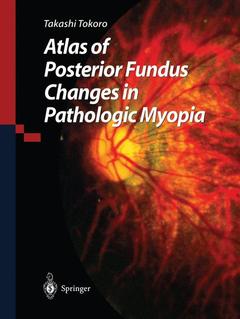Atlas of Posterior Fundus Changes in Pathologic Myopia, Softcover reprint of the original 1st ed. 1998
Auteur : Tokoro Takashi

Presenting of more than 50 different cases studies * Generous use of full-color photographs to show in detail the course of fundus changes
Date de parution : 09-2011
Ouvrage de 203 p.
21x27.9 cm
Disponible chez l'éditeur (délai d'approvisionnement : 15 jours).
Prix indicatif 52,74 €
Ajouter au panierThème d’Atlas of Posterior Fundus Changes in Pathologic Myopia :
Mots-clés :
angiography; classification; development; diagnosis; distribution; membrane; microscopy; research; retina



